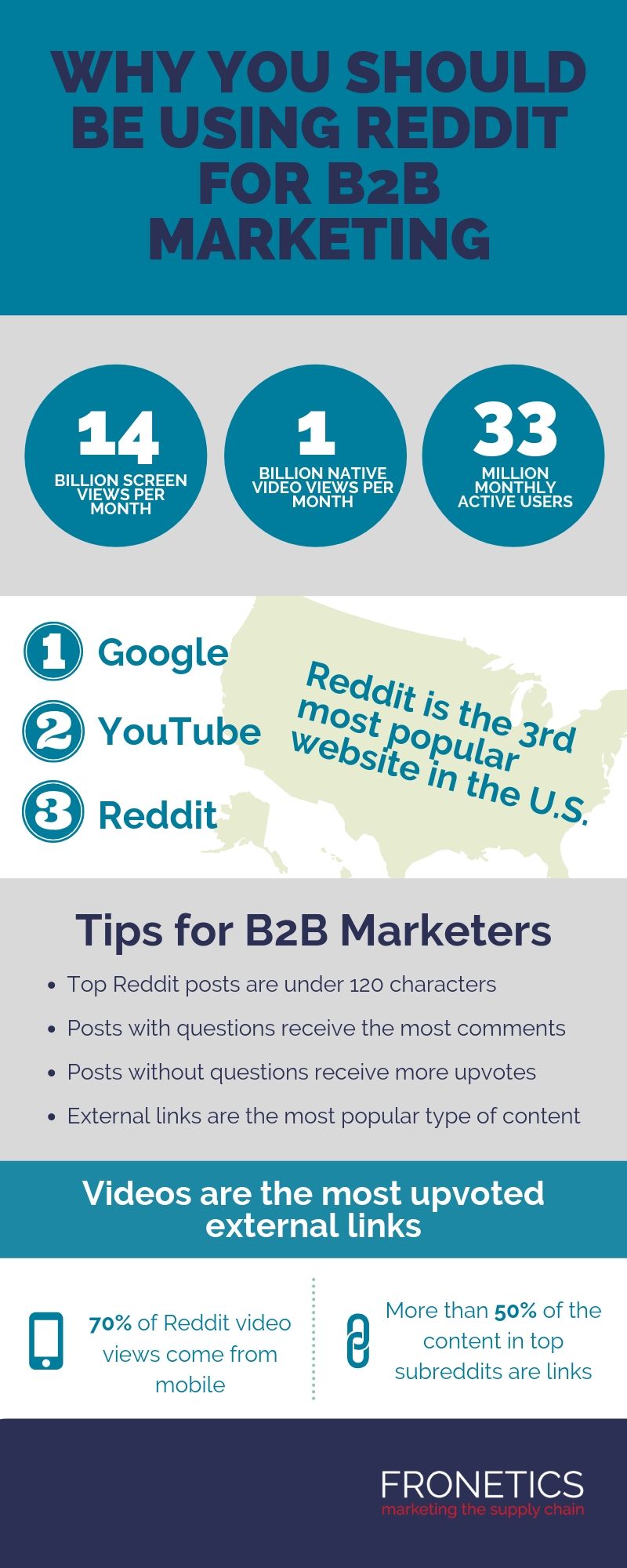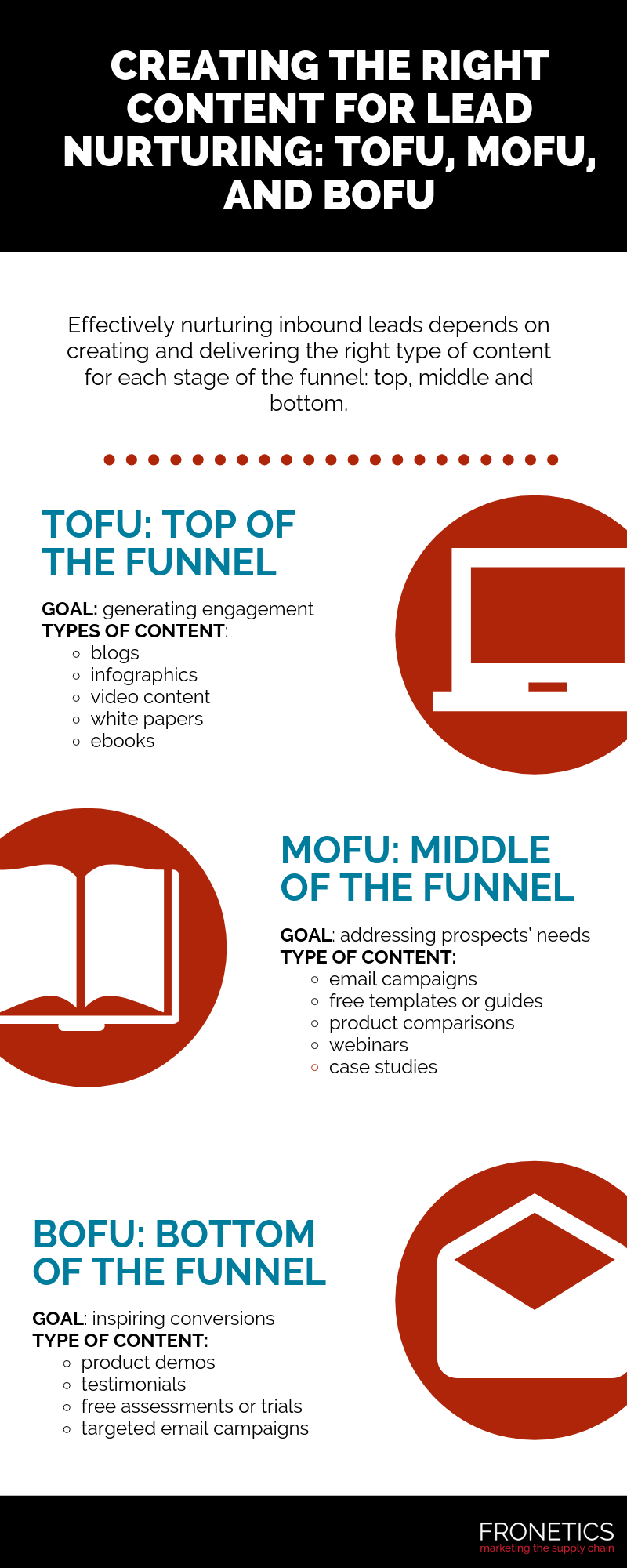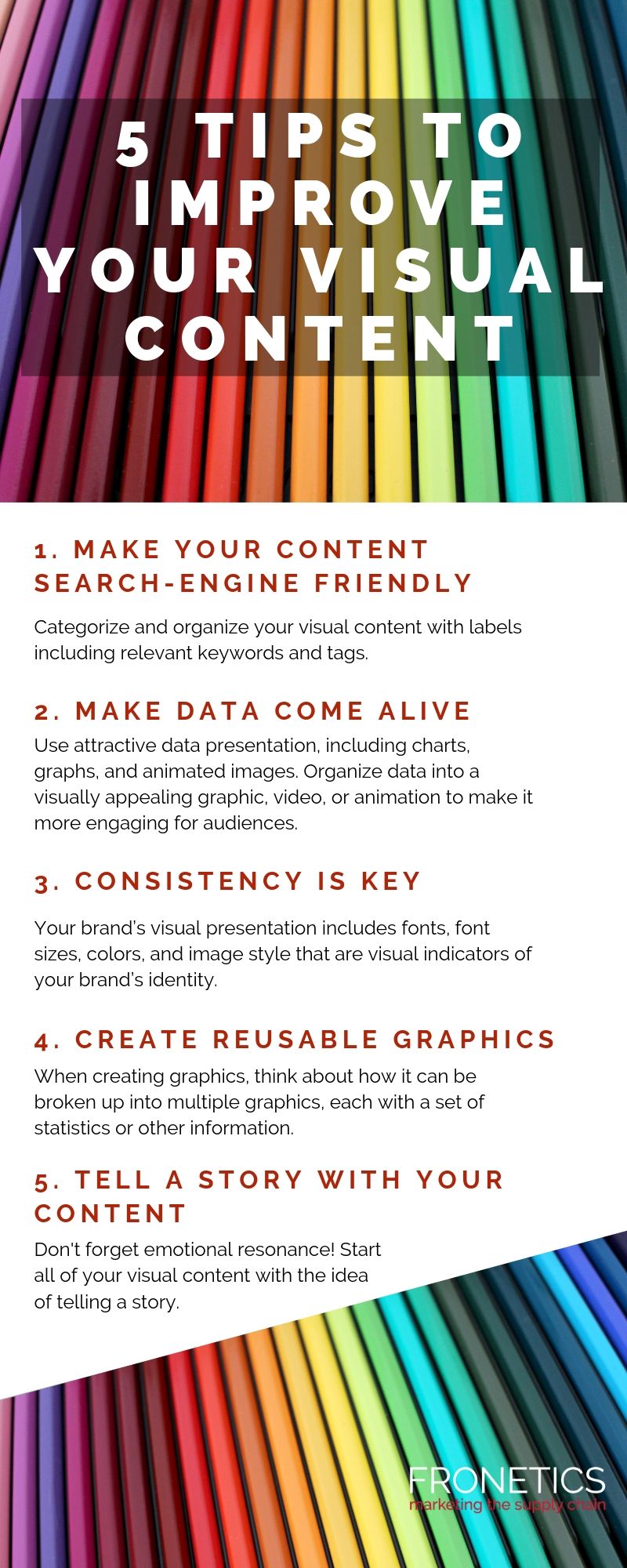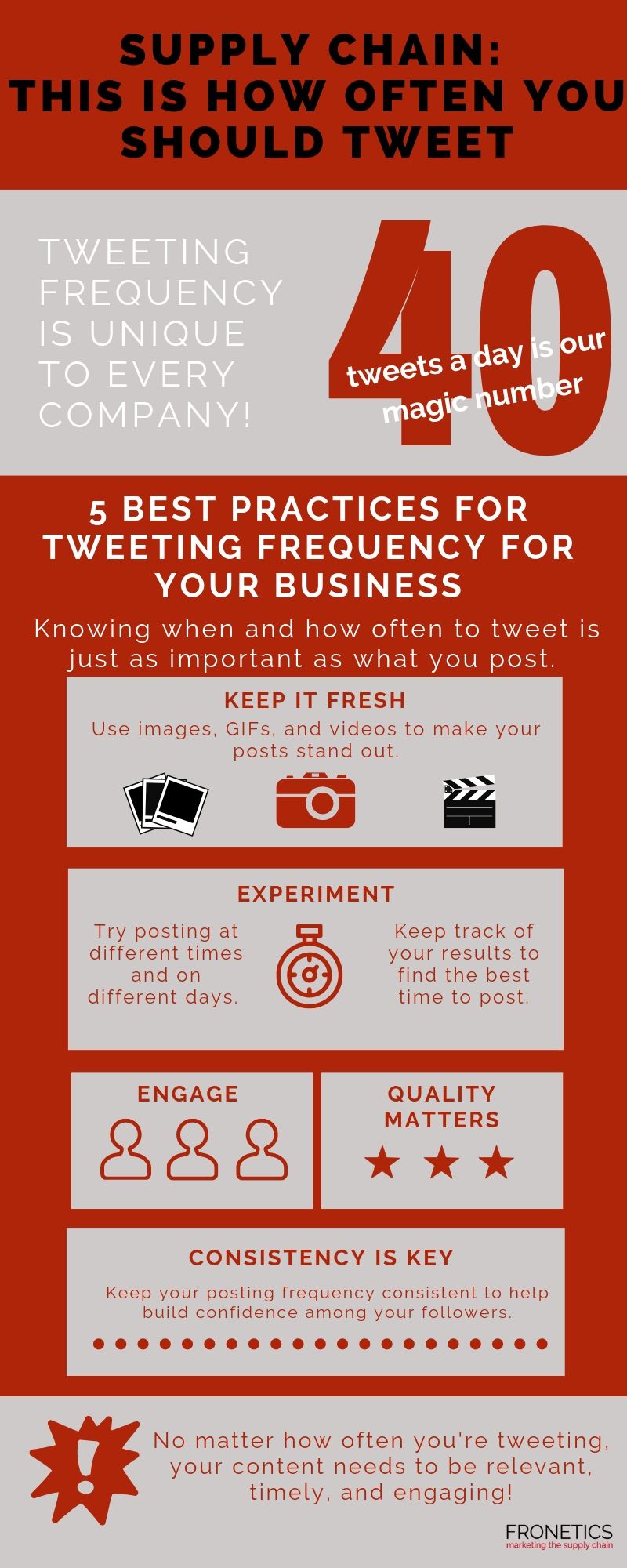
by Fronetics | Oct 24, 2019 | Blog, Marketing, Social Media
Facebook Messenger is the latest trend in chatbots for the supply chain. Here are powerful numbers to prove why your brand needs to be active on the messaging platform.
Patience is a virtue of the past. Today’s buyers want (and expect) marketers to actively engage with them throughout the purchasing journey. And offering them generic information won’t work — they want personalized communications based on who they are, what they have purchased in the past, and what they are interested in buying. Businesses can no longer afford a one-size-fits-all communication strategy.
The focus has shifted from passive marketing to engagement, which has marketers scrambling to be everywhere, at all times, to ensure a positive customer experience. In response, we’ve seen an increase in chatbot usage in the supply chain and logistics industries. Chatbots help improve the customer experience through automated systems that emulate human conversation.
Chatbots rely on the popularity of messaging apps. And, luckily for marketers, messaging app usage is on the rise:
- There were 2.18 billion messaging app users globally in 2019. (Statista)
- At the end of 2018, 78% of the world’s smartphone users were messaging every month. (Facebook)
- By 2021, it’s predicted that the global user base for mobile messaging apps will have risen by a further 23%. (Facebook)
- People share more than 17 billion photos on messaging apps every month. (Mobile Monkey)
And though WhatsApp has the highest percentage of users worldwide, Facebook Messenger has taken over as the most popular messaging app in the U.S. With over 1.3 billion monthly users, this powerful messaging platform holds a lot of potential for marketers.
Even though marketers know that Facebook Messenger is a platform they can no longer ignore, supply chain and logistics brands have been slower to jump on board. But if you’re questioning if you should be using Facebook Messenger to engage with audiences, the answer is yes.
Supply chain businesses can use this platform to deliver content, engage with customers one on one, and offer superior personalized customer service, all of which result in high-quality relationships and leads.
Here are some staggering numbers to back up our point.

(Made with Canva)
Final thoughts
What was once thought of a teen social app, Facebook Messenger is now dominating the business world with increasing popularity and no sign of slowing down. In fact, we as a brand have found huge success using Messenger to engage with new leads. In the first 24 hours of using the platform, we were able to set up a meeting with a new prospect. That was just in the first 24 hours. This prospect turned out to be our next client, and the initial connection was all made through Facebook Messenger.
Related posts:


by Fronetics | Oct 2, 2019 | Blog, Content Marketing, Logistics, Marketing, Social Media, Supply Chain
Our infographic gives you everything from the basics to the specifics of using Reddit for B2B marketing.
Highlights:
- Reddit is a social platform made up of thousands of individual forums where users can post content and vote on its relevance and value.
- The first rule of Reddit: avoid overt brand promotion and sales pitches.
- Creating your own subreddit is the best way to make Reddit a high-value marketing channel.
Reddit calls itself the “frontpage of the internet.” And for good reason. The social networking site boasts over 300 million active users, as well as 140,000 active communities and a whopping 14 million pageviews per month. However, when it comes to using Reddit for B2B marketing, it’s still a relatively untapped channel.
Our infographic is your ultimate guide to using Reddit for B2B marketing. Read on to find out more about this platform and how you can put it to work for your business.
What is Reddit?
Since the site was founded in 2005, Reddit’s user base has skewed young. However, as millennials come of age and rise to positions of influence within the B2B purchasing landscape, Reddit is becoming an increasingly effective way to reach your target audience.
At its most fundamental level, Reddit is a social sharing website built around users submitting links, pictures, and text, which the community can then vote on. Similarly to Quora, the content that’s voted as best rises to top visibility, while downvoted content becomes less visible.
The structure of the site resembles an intricate message board, divided up into hundreds of thousands of subfolders, called “subreddits,” which function as specific forums. Imagine just about any topic you can think of, and there’s probably a subreddit for it. In fact, for thinking about Reddit for B2B marketing, the following subreddits could be of interest:
If you’re looking for industry discussion on a specific marketing topic, it’s likely you can find a relevant subreddit. While each subreddit has different moderators and regulations, there’s one common thread that runs through the entire site: there is a premium placed on authentic content and interactions – and a disdain for overt self-promotion.

(Made with Canva)
Using Reddit for B2B marketing in 5 steps
Now that we’ve covered the basics about what Reddit is and how it works, let’s talk about how to make it part of your marketing strategy.
Step 1: Determine your target subreddit(s).
In the same way that a good digital marketing strategy begins with identifying your target audience, determining your target subreddits is the starting point for successfully using Reddit for B2B marketing. While the massive quantity of subreddits can be overwhelming, consider the following three questions to zero in on the right subreddits for your business:
- Does the subreddit relate to your business’ brand or products, as well as any specific keywords that shape your digital marketing strategy?
- How large is each subreddit’s audience? (Note: bigger isn’t necessarily better. A larger audience has the potential to generate more traffic, but it’s easier to establish your brand’s presence in a smaller subreddit.)
- How much engagement does the subreddit generate?
Once you’ve determined a few relevant subreddits with various audience sizes and high engagement, you’re ready to begin posting.
Step 2: Post links… to websites other than your own.
Before you start wondering why we’re encouraging you to promote other pages, there’s another facet of Reddit to consider. The platform takes the idea of Karma to a literal level. On Reddit, your reputation is referred to as your “Karma score,” and it’s determined by your level of positive participation on Reddit, measured by the number of upvotes you receive. As your Karma score rises, your posts become more visible.
One of the most effective ways to boost your Karma score, particularly when you’re starting out, is to post links to content that the subreddit community finds relevant and generate conversation. It’s important to make sure you don’t repost content that another member of your subreddit has already posted, as duplicates can hurt your Karma score.
Step 3: Share valuable content… that’s not a sales pitch.
When posting content to your target subreddits, the path to success is quite simple. Post content that offers value to the community. This means engaging in discussions, asking and answering questions, and, at all costs, avoiding blatant sales pitches.
Sam Holzman of ZoomInfo explains it this way: “Sharing a link to a product page will signal that you’re a marketer who wants to promote products, not an engaged community member. On the other hand, a blog post about the benefits of a particular product will be more useful to your fellow community members and, as a result, is more likely to be upvoted and commented on.”
Step 4: Advertise on Reddit.
While blatant sales pitches on Reddit are a sure way to a low Karma score, the platform does offer its own native advertising. Similar to Facebook and Twitter, Reddit Advertising is a relatively inexpensive way to boost the visibility of your content on the platform. However, it’s important to note that Reddit doesn’t offer the type of analytics as Facebook and Twitter.
Sponsored posts on Reddit appear at the top of targeted subreddits for a specified duration. You pay for duration as well as the number of impressions you receive. Sponsored posts look like any other Reddit posts. Advertising on the platform isn’t necessary for success, but it can help establish a visible presence, particularly at first.
Step 5: Create a subreddit.
Creating a subreddit isn’t easy – it requires a significant time investment to start and maintain. However, doing so is the best way to turn Reddit into an extremely valuable marketing channel. Once you’ve established your presence, creating a branded subreddit gives your customers and prospects a forum to interact, with you and with each other.
Particularly at the outset, you’ll likely need to promote your subreddit on other platforms. Post links to it on your other digital assets, and you could even offer an incentive for engaging on your subreddit.
Your branded subreddit is also an ideal place to offer customer service. Holding exclusive Q&As, referred to on Reddit as AMAs (“Ask Me Anything”), is another effective strategy to drive traffic and engagement on your subreddit.
The bottom line on Reddit for B2B marketing
Reddit is a rich resource for marketers and a fertile ground for marketing your brand and products. The platform is best thought of as a place to share and engage with high-quality, valuable content, rather than as a place for overt promotion. Effectively using Reddit for B2B marketing requires an investment of time and energy, but the results can be well worth the effort.
Related posts:


by Fronetics | Sep 11, 2019 | Blog, Content Marketing, Marketing, Strategy
Ushering qualified leads through the sales funnel requires the right kind of content at the right time. Here’s what kind of content you need for ToFu, MoFu, and BoFu.
Highlights:
- ToFu, MoFu, and BoFu are abreviations for top of funnel, middle of funnel, and bottom of funnel, respectively.
- ToFu content should be geared toward audience engagement and getting contact information – not converting.
- MoFu stage content should establish that your business can address a prospect’s specific needs.
Consider this statistic: 50% of qualified B2B leads aren’t ready to make a purchase when they initially convert. That means that in order to usher prospects effectively through the sales funnel, marketers need to deliver the right content for each stage of the buyer’s journey. That’s where idea of ToFu, MoFu, and BoFu content comes in.
In case you’re wondering, none of these three words refer to soy-based vegetarian snacks. Instead, ToFu, MoFu, and BoFu are marketing portmanteaux, meaning top of funnel, middle of funnel, and bottom of funnel, respectively. Effectively nurturing inbound leads depends on creating and delivering the right type of content for each stage of the funnel.
ToFu, MoFu, and BoFu: a primer
Before we talk about what kind of content to deliver to prospects at each stage of the buyer’s journey, let’s take a closer look at what the terms ToFu, MoFu, and BoFu refer to and what your goals should be at each stage.
ToFu: top of the funnel
At the top of the sales funnel (ToFu), your goal is to draw in a wide audience of prospective leads, increasing brand awareness and customer engagement. This is the awareness stage of the buyer’s journey, and it represents your first impression. Leads at the top of the funnel are getting a sense of what your business does and your brand identity.
For ToFu leads, your goal isn’t conversion but simply to obtain contact information and generate interest. Says Gaetano DiNardi, Director of Demand Generation for Nextiva, ToFu “is where strangers become familiar with your brand for the first time… At this stage of the game, you don’t care about conversions; you care about piquing intrigue.”
MoFu: middle of the funnel
The middle of the funnel (MoFu), is the consideration stage of the buyer’s journey. This can be a tricky and uncertain stage as your leads continue to engage with your brand and learn about your products and services but remain unready to commit to purchase. “MoFu is usually the most complicated funnel stage because of how hard it is to define,” says DiNardi.
Ideally, by the MoFu stage, you should have a clearer idea of who your leads are and what they’re looking for. Your focus should be on continuing to educate your leads and situating your products and services as the solution to the challenges and needs of your prospects.
BoFu: bottom of the funnel
The bottom of the funnel (BoFu) is the decision stage of the buyer’s journey. You’ve established a relationship with your prospect during the MoFu stage, and your lead is now turning to you for specific information about your products and services. It’s at the BoFu stage that leads are ready to make a purchasing decision.
This is the stage when it’s all about conversion. Your goal is to inspire your lead to convert, helping them to realize that your business has the solutions they need. It’s important to note here that your goal is not to “sell,” but rather to make sure your leads know that you’re there to help.

(Made with Canva)
Optimizing ToFu, MoFu, and BoFu content for lead nurturing
Once you have a clear idea of the stages of the sales funnel and your goals for each, it’s time to consider the right types of content to ensure that prospects receive exactly the right message for each step of the buyer’s journey.
ToFu content: generating engagement
At the top of the sales funnel, where your goal is to engage your audience and collect contact information from qualified prospects, your content needs to educate leads and establish thought leadership. ToFu content shouldn’t pressure your audience to make a purchase, but instead should be geared toward providing information that speaks to needs, challenges, and questions common to your target audience.
According to Coralie Wood, Director of Demand Generation at LoginRadius, “Top-of-funnel content needs to be much more digestible and informative to ensure you are positioned as a thought leader.”
Some types of content that work particularly well for the ToFu stage:
- Blog posts
- Infographics
- Video content
- Whitepapers
- eBooks
MoFu content: addressing prospects’ needs
At this challenging middle stage, your content should begin to establish your business as the solution to a prospect’s specific needs and challenges. This is the consideration stage, and your lead is in the process of evaluating all available information to prepare to make a purchasing decision. Developing the relationship requires that your content be highly informative about how your business is ready to meet your prospect’s needs.
Because of the “wide net of interested leads who haven’t been fully qualified,” says DiNardi, “if you are too shameless about plugging your products or services, you’ll come across as pushy and likely to turn off buyers.” Instead, he suggests being “helpful and knowledgeable, while guiding your prospects into the right decision.”
Effective content types for the MoFu stage include:
- Email campaigns
- Free templates or guides
- Product-to-product comparisons
- Webinars
- Case studies
BoFu content: inspiring conversions
Now that your ToFu and MoFu content have attracted and nurtured a qualified lead, it’s time for your BoFu content to convince your lead to convert. It’s the closing stage of the buyer’s journey, which means marketers should be directing prospective buyers toward content that sells. This type of content is about cementing a decision and helping your leads recognize that your business has the right solutions.
“It’s important to note here that BoFu content can also lead directly into validation. This starts to cross the line from traditional content marketing to things like product marketing and customer testimonials,” says Mike Baker, marketing director at Lola.com. “As you work closer to the bottom-of-the-marketing funnel, your content should shift from purely educational to a more consultative, product-focused and a ‘show-don’t -ell’ style of marketing.”
BoFu content types geared to inspiring conversions include:
- Product demos
- Case studies and testimonials
- Free assessments or trials
- Targeted email campaigns
Related posts:


by Fronetics | Aug 7, 2019 | Blog, Content Marketing, Logistics, Marketing, Supply Chain
As digital natives flood the purchasing landscape, visual presentation is critical. Our infographic offers tips to improve your visual content to resonate with today’s buyers.
Highlights:
- Visual content can be more easily digestible and compelling than purely text-based content.
- Optimize your visual content for search engines by accompanying it with searchable text and tags.
- Keep branding consistent with a unified color scheme and fonts.
The internet is becoming an increasingly visual space, and brands are feeling the pressure to stand out from the masses. But making an effort to improve your visual content doesn’t have to be an arduous chore. In fact, the type of complex information that supply chain marketers often need to present can be far more easily digestible in graphic format.
Strategically created and distributed content that is design-minded and visually appealing is your brand’s best friend. Our infographic offers 5 ideas to improve your visual content efforts, with a focus on broadening your brand’s reach, engaging your audience, and generating leads.
5 tips to improve your visual content

(Made with Canva)
1) Make your content search-engine friendly.
In the same way that social media analytics are struggling to keep up in an increasingly visual climate, search engines have yet to be effective at searching visual content. No matter how compelling your visual content, you won’t be getting the most out of your efforts unless you optimize your content for search engines.
There’s a simple solution to make sure your visual content makes it to the top of relevant search queries: post a text transcript with video or accompanying explanatory text with infographics and images. You can also make sure your visual content is easily searchable by categorizing and organizing it. Label visual assets like logos and images with relevant keywords, and tag them when publishing.
2) Make data come alive.
When it comes to presenting the kind of turgid data that’s often inherent in supply chain purchasing, visual formats are a marketer’s best friend. Supply chain marketers are ideally positioned to make use of attractive data presentation, including charts, graphs, and animated images. Organizing data into a visually appealing graphic, video, or animation makes it far more engaging and digestible for your audience.
3) Create reusable graphics.
Whether you’re creating visual content in house or outsourcing visual content creation, it behooves you to consider how it can be reused. When designing an infographic, for example, think about how it can be broken up into multiple graphics, each with a set of statistics or other information. You can combine these smaller graphics to other pieces of text content, adding visual appeal and boosting engagement.
These visual snippets are also ideal for posting on social media as teasers to link to fuller visual assets.
4) Consistency is key.
One of the most important things you can do to improve your visual content is make sure it’s consistent. Your brand’s visual presentation includes fonts, font sizes, colors, image styles, and any other graphic elements that are visual indicators of your brand’s identity.
Make sure all content creators in your organization receive clearly documented visual guidelines, along with samples for their use. Every time you publish visual content, include checking these guidelines as part of your editorial process.
5) Tell a story with your content.
The difference between good visual content and great visual content ultimately boils down to one thing: emotional resonance. The most significant way you can improve your visual content is to start with the idea of telling a story.
Ideally, you’re presenting data in a way that communicates a feeling and elicits an emotional response from the viewer. If your data is impactful, your viewers will forge an emotional connection with your brand.
What tips do you have to improve your visual content?
Related posts:


by Fronetics | Jul 10, 2019 | Blog, Content Marketing, Current Events, Marketing, Social Media
Knowing when and how often to tweet is just as important what you post. Here’s how often your business should be tweeting.
Highlights:
- Be consistent with your tweeting frequency, while keeping content fresh.
- To determine how often to tweet for your business, experiment with different posting frequencies, and use analytics tools to track your results.
- As with any digital marketing endeavor, quality is more important than quantity.
It’s a perennial question we get from our clients: how often should business be posting on social media? The answer varies widely from platform to platform, and the answer for how often to tweet has proved a controversial one.
Back in 2016, in response to a Socialbakers study that suggested that posting to Twitter three times a day is an ideal frequency for brands, Fronetics conducted a study of our own. We determined that for our business, tweeting around 40 times a day is optimal.
What these radically divergent results demonstrate is that the answer to how often to tweet is not a simple one. While the bottom line is that optimal tweeting frequency is unique to every brand, there are 5 best practices your business should be aware of.
5 best practices concerning how often to tweet for your business

(Made with Canva)
1) Consistency is key
Whether you’re tweeting once a day, or a hundred, being consistent about posting frequency will serve you best. Keeping your posting frequency relatively consistent lets your followers gain confidence that you will set and expectation and meet it. As social media algorithms become less friendly to businesses, it’s all the more important that you bring your followers to you.
2) Keep it fresh
It’s important to point out that consistency is key only when it comes to how often to tweet – not the content you’re publishing. Particularly on Twitter, varying your content is the best way to keep your audience engaged. Use images, GIFs, and videos to make your posts stand out, or ask questions to promote conversation and engage your followers.
3) Experiment
When it comes to how often to tweet for your business, you’ll find all kinds of divergent ready-made answers. But the truth is, there’s no magic number. Your business or your marketing partner needs to determine what works for your unique brand and audience. The best way to do this is to experiment with posting at different times and keep track of your results. In addition to Twitter’s internal analytics, these five tools can help you track and evaluate the results of your experiment.
4) Engage
As with any social media platform, publishing content shouldn’t be your only focus. Engaging with your followers, from comments to retweets, is crucial for generating an active and loyal audience.
In addition, using social media to interact with your audience can help inform your decisions about how often to tweet. When are your followers most active? What kind of content do they want to see from you? Having a conversation with your followers is one of the best ways you can answer this question.
5) Quality matters
There’s no amount of posting frequency that makes up for posting poor quality content. If your content is bad, you’d likely be better off not posting at all. Publishing content that doesn’t interest your audience will lose you followers and leads. No matter how often you’re tweeting, your content needs to be relevant, timely, and engaging.
Related posts:
















